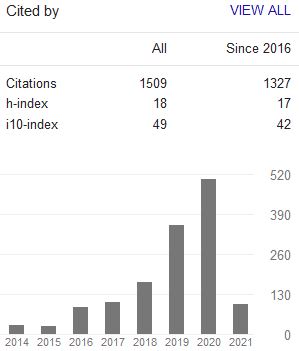THE JOURNEY OF HAJJ DURING THE COLONIAL ERA IN MODERN INDONESIAN LITERATURE: Social and Cultural Studies
Abstract
Keywords
Full Text:
PDFReferences
Abdurahman, Emsoe. Haji Tempo Doloe. Bandung: MCM Publishing, 2016.
Azra, Azumardi. Jaringan Ulama Timur Tengah dan Kepulauan Nusantara Abad XVII dan XVIII. Jakarta: Prenadamedia, 2013.
van Bruinessen, Martin. Kitab Kuning. Pesantren dan Tarekat. Bandung: Mizan, 2016.
Chamber-Loir, Henri , & Claude Guilote. Ziarah dan Wali di Dunia Islam. Jakarta: Komunitas Bambu, 2010.
Chamber-Loir, Henri. Naik Haji di Masa Silam. Kisah-kisah Orang Indoneia Naik Haji 1482-1964. Jakarta: KPG, EFEO, Forum Jakarta-Paris, Perpunas, dan Kementerian Agama, 2019.
Darmadi, Dadi. “Hak Angket Haji: Pilgrimage and Cultureal Politic of Hajj Organization in Comtempory Indonesia.” Studia Islamika 20, 3 (2013).
Francis, G. Tjerita Nyai Dasima. Betawi: Kho Tjeng Bie & Co, 1896.
Ghaleb, Ahmed Mohamed Yahya. “The Religious Obligation of the Pilgrimage from Indonesia to Mecca.” Ostour: A Bi-annual Peer-Reviewd Journal for Historical Studies 4 (2016).
Al Hadi, M. Sabiq. “Rekonstruksi Pemahaman yang Keliru Tentang Kewajiban dan Keutamaan Haji dan Umroh.” Al-Iqtishod : Jurnal Ekonomi dan Bisnis Islam 1, 1 (2019).
Hamka. Di Bawah Lindungan Kabah. Jakarta: Balai Pustaka, 1938.
Hs, Suman. Percobaan Setia. Jakarta: Nusantara, 1931.
Jahroni, Jajang. “Menemukan Haji Hasan Mustafa (1852–1930).” Studia Islamika 25, 2 (2018).
Japeri. “Pengaruh Predikat Haji Mabrur Terhadap Motivasi Manasik Calon Jamaan Haji.” Maqdis: Jurnal Kajian Ekonomi Islam 2, 1 (2017).
Joll, Christopher Mark, and Srawut Aree. “The Image of Makkah and the Hajj in South Thailand: An Ethnographic and Theological Exploration.” Studia Islamika 27, 2 (2020).
Kuntowijoyo. “Sejarah dan Sastra.” Humaniora 16, 1 (2004).
Madjid, Nurcholish. Bilik-bilik Pesantren. Jakarta: Dian Rakyat, 2010.
———. Perjalanan Religius Umrah dan Haji. Jakarta: Paramadina, 1997.
Majid, M. Dien. Berhaji Masa Kolonial. Jakarta: CV Jakarta, 2008.
Misrawi, Zuhairi. Mekah. Kota Suci, Kekuaaan, dan Teladan Nabi Ibrahim. Jakarta: PT Kompas, 2009.
Mukti, Haji. Hikayat Siti Mariah. Jakarta: Lentera Dipantara, 2003.
NA, Kar-Yen. “Speaking Across the Lines: 1965, the Family, and Reconciliation in Indonesia.” Kritika Kultura 37 (2021).
Pringle, Robert. Islam di Tengah Kebhinekaan. Memahami Islam dan Politik Di Indonesia. Jakarta: Prenada, 2018.
Nurohman, Dede, “Selling Religious Rituals in Indonesia: Commodification of Umrah Pilgrimage by Travel Agents,” Journal of Indonesian Islam 16, 2 (2022).
Purwantini and Bramantio. “The adventure of the Radical Islamic Group Members of the Free Aceh Movement in Seumpama Matahari Novel: Study of Genetic-Structuralism.” Journal of Indonesian Islam 12, 1 (2018).
Rohmana, Jajang A. “Sundanese Sufi Literature and Local Islamic Identity: A Contribution of Haji Hasan Mustapa’s Dangding.” Al-Jami’ah: Journal of Islamic Studies 50, 2 (2012).
Rosyid, Moh. “Dinamika Haji Indonesia Sejak Era Kolonialisme dan Problematika Calon Haji Ilegal.” Ijtihad: Jurnal Wacana Hukum Islam dan Kemanusiaan 17, 2 (2017).
Rosyidi, Imron, and Encep Dulwahab. “Transformasi Konsep Diri Jamaah Haji (Studi Fenomenologi Pada Kelompok Bimbingan Ibadah Haji Lembaga Haji Muhammadiyah Jawa Barat).” Inferensi: Jurnal Penelitian Sosial Keagamaan 13, 2 (2020).
Rush, James R. Adicerita Hamka : Visi Islam Sang Penulis Besar untuk Indonesia Modern. Jakarta: Gramedia Pustaka Utama, 2017.
Soehadha, Moh. “Struggle For Identity and Social Image of Haji: Study on Life History of Social Construction of Haji in Sasak Community, Lombok, NTB.” Esensia: Jurnal Ilmu-Ilmu Ushuluddin 18, 1 (2017).
Tagliacozzo, Eric. Journey: Southeast Asians and the Pilgrimage to Mecca. Oxford: Oxford University Pres, 2013.
Toer, Pramoedya Ananta. Sang Pemula. Jakarta: Hastamirta, 1985.
Yusuf, Imaning. “Pembunuhan dalam Perspektif Hukum Islam.” Nurani: Jurnal Kajian Syari’ah dan Masyarakat 13, 2 (2013).
Zainuddin, M. “Haji dan Status SosiaL: Studi Tentang Simbol Agama di Kalangan Masyarakat Muslim.” El-Harakah 15, 2 ( 2013).
Zulfa, M. “Multidimensional Phenomena of Hajj: Study of Javanese Pilgrims.” Indonesian Journal of Islam and Muslim Societies 5, 1 (2015).
DOI: 10.15642/JIIS.2023.17.2.283-299
Refbacks
- There are currently no refbacks.
Indexed by:
Journal of Indonesian Islam (ISSN 1978-6301 and E-ISSN 2355-6994) is published by the Postgraduate Program (PPs) and the Institute for the Study of Religion and Society (LSAS), State Islamic University (UIN) of Sunan Ampel Surabaya.
Journal of Indonesian Islam by http://jiis.uinsby.ac.id/index.php/JIIs/index is licensed under a Creative Commons Attribution-ShareAlike 4.0 International License.
Copyright ©2020 State Islamic University (UIN) of Sunan Ampel Surabaya. Powered by Public Knowledge Project OJS.







